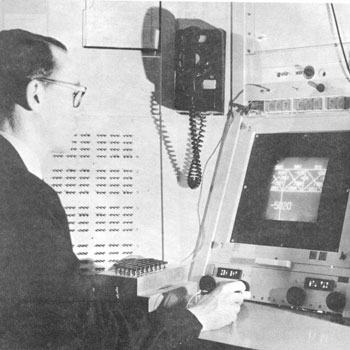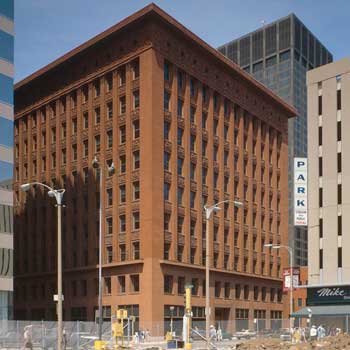Since its start, dating back centuries, construction has developed into a high-tech, high-powered and dominating industry. Esteemed individuals are coming up with new ideas, designing new inventions and manufacturing easy-to-use materials that help transform it into something new and exciting.
So, have you ever wondered who some of these influential individuals from construction history are and how they made an impact?
Take a look at nine of the key people who have helped shape the construction industry into what it is today.
Computer aiding systems and technology have been a recent push in the construction industry to help improve construction and cut back on timelines. Computer-Aided Design, known as CAD, is a developed software from the 1960s that is now being used to assist engineers, designers, architects and construction managers. Although there are many forms of CAD, the industry uses this system in manufacturing and designing to help skilled designers interact with their drawings virtually.
The first computer-aided design was developed by Ivan Sutherland. The program used a graphical user interface known as Sketchpad. The Sketchpad system stored explicit information, drawings and was able to alter designs to meet new conditions of its user.

Ivan Sutherland operating the Sketchpad system. Scanned by Kerry Rodden from original photograph by Ivan Sutherland.
Today, Sutherland’s development of CAD systems allows architects and designers to work smoothly with construction managers by updating details and drawings in real-time. Drawings and plans can be easily stored so work can continue at any location, and CAD software depicts more accurate drawings than those done manually. As CAD continues to progress, the ease of use for this system will continue to better the industry.
Although no one individual is credited with inventing welding, 19th-century French engineer Auguste de Meritens became the first person to patent an arc welding method, which used heat from electricity to join together lead plates. Around the same time, Russian inventor Nikolay Benardos patented his own method of electric arc welding with carbon rods. This started a domino effect in the industry as many individuals advanced the process to create more efficient techniques and develop what is known as welding today.
These two gentlemen are credited with being developers of a practice that helped revolutionize the construction industry. Welders, a craft profession with employment projected to grow by 3%, use welding to complete various construction projects. Welding is not only a repair tool, but it is also the foundation for creating durable, quality material for structures.
With over 30 different types of welding in existence, it is no doubt this practice plays an important role in the development of building America.
Regulating and legislating workplace safety, Richard Nixon signed into law the Occupational Safety and Health Act, which established the Occupational Safety and Health Administration (OSHA) back in 1970. OSHA, continuing to progress and improve the working environments of today’s workforce, including the construction industry, commits to its mission to send every worker home whole and healthy every day. OSHA cut workplace fatalities by 62% and occupational injury and illness rates by 40%.
OSHA, especially important to the construction industry, sets the standards for job sites to ensure craft professionals have the right equipment, training and support to work safely on any project. Nixon gave the federal government the authority to enforce these safety standards to provide safe, healthy sites.
Over the years, OSHA has evolved to include hazard communication, eye and face protection, scaffolding requirements, fall protection and training requirements for craft professionals. In construction, safety comes first.
Architects typically see the beauty in buildings. They plan, design houses, office buildings, large structures and more to showcase the appearance and detail of its construction. However, architects and the industry of architecture attempt to defy what is seen as impossible. Louis Henry Sullivan, known as the “Father of Skyscrapers,” is a prime example of a prodigy who chose to raise the bar for the industry.
Sullivan created a new style of architecture, through adapting “previous ornamental styles to the newly-emerging tall buildings of the late 19th century, using it to emphasize a building’s verticality.” Among many designs, he is most known for the Wainwright Building in St. Louis. Despite the early limits of engineering a tall building, such as the strength of the walls, new techniques and developments helped foster Sullivan’s ideas into reality.

Sullivan’s Wainwright Building in St. Louis, MO.
Earning widespread recognition and influencing many who followed in his footsteps, Sullivan’s designs left a profound impact on this craft profession.
Receiving two patents for her work, Pat Billings has long kept the recipe for one of the most revolutionary substances of the modern construction industry a secret. In the 1970s, Billings dedicated her time to creating a modern equivalent to a cement additive, giving plaster longevity. This invention was originally intended to help her career as an artist; however, her discovery impressed several other markets, including construction.
Her creation, Geobond®, surfaced after adding a milky additive to a mixture of gypsum and concrete. From this, an indestructible plaster formed. But, the most significant characteristic of Geobond® products is it’s extremely resistant to heat, able to bear over 2,000°F of heat. Not even a rocket engine can burn the product!
Thanks to Billings’ material, Geobond® continues to shape and greatly advance the construction industry by advancing the options available for building high quality, strong buildings.
In 1993, Rick Fedrizzi, David Gottfried and Mike Italiano establish the U.S. Green Building Council (USGBC) with a mission to promote sustainability-focused practices in the building industry. Dedicated to fulfilling its vision, the council created the green building rating system, known as LEED, which has become an international standard for certifying environmentally sound buildings.
USGBC and LEED continue to advocate for a greener future, encompassing practices such as encouraging partnerships to develop green building standards, exploring green building research and data and generating reach across the U.S.
The collaboration of these three individuals to create USGBC has led to the transformation of how construction is designed, built and operated and paved the way for a sustainable future in the construction industry.